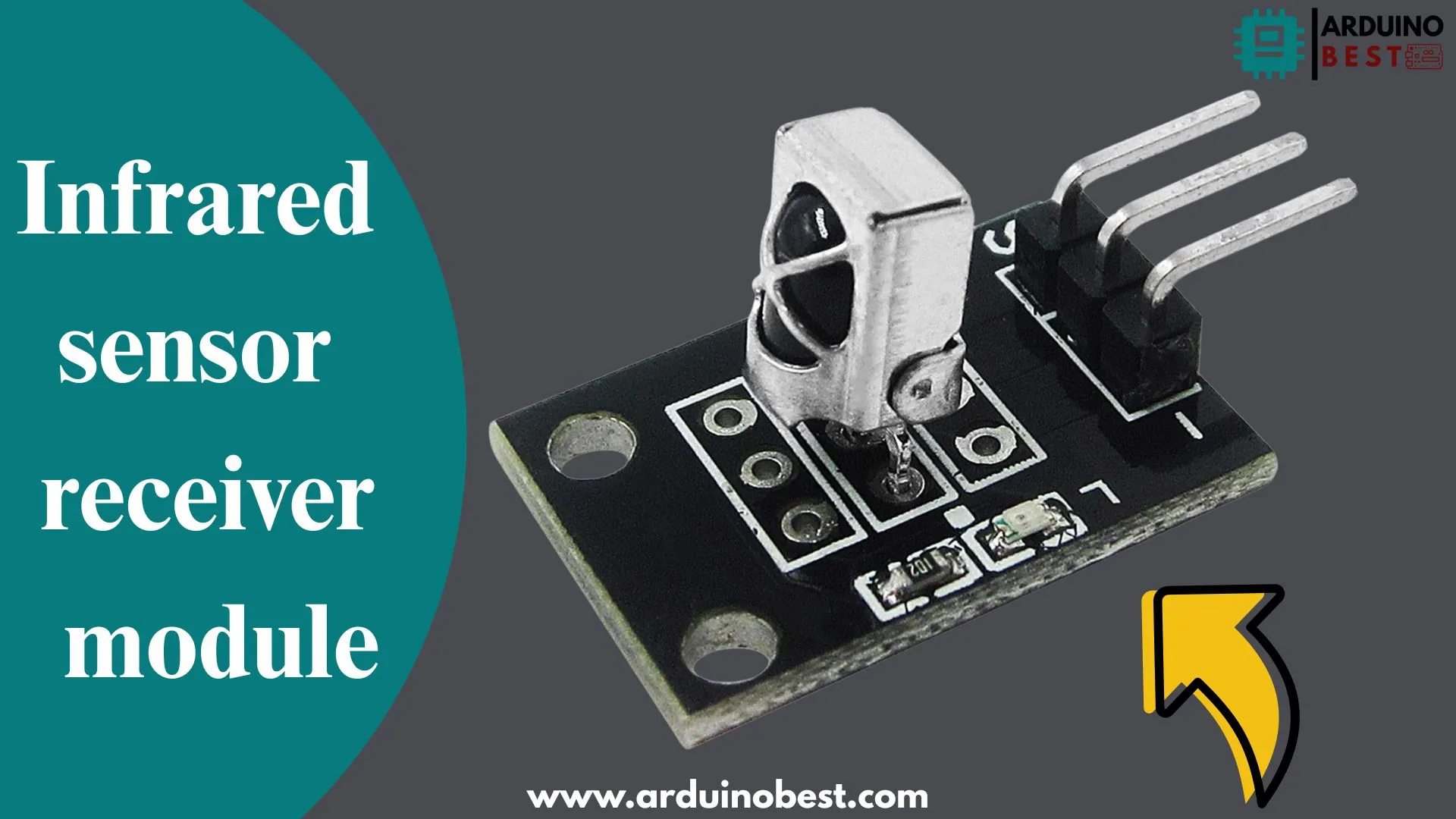Table of Contents
Introduction
In modern electronics, infrared sensor receiver modules play a crucial role in wireless communication, automation, and security systems. These modules detect and process infrared (IR) signals, enabling seamless interactions between remote controls, automated systems, and microcontrollers.
Whether you’re designing a remote control system, proximity sensor, or infrared communication setup, understanding infrared sensor receiver modules is essential. In this guide, we’ll explore their working principles, types, applications, and integration with microcontrollers.
What is an Infrared Sensor Receiver Module?
An infrared sensor receiver module is an electronic component that detects infrared light and converts it into an electrical signal. These modules are commonly used in remote controls, security systems, and object detection applications.
How It Works
- The IR transmitter emits infrared signals.
- The infrared receiver detects and filters the signal.
- The demodulator processes the signal and outputs a usable electrical signal for further processing.
- The microcontroller or circuit interprets the signal and executes the appropriate command.
Types of Infrared Sensor Receiver Modules
1. Active vs. Passive Infrared Sensors
- Active infrared sensors emit infrared light and detect reflections to determine object presence.
- Passive infrared sensors (PIR) detect infrared radiation emitted by warm objects, commonly used in motion detectors.
2. Modulated vs. Non-Modulated Receivers
- Modulated IR receivers detect signals transmitted at a specific frequency (e.g., 38kHz, 40kHz). These are commonly found in TV remotes.
- Non-modulated IR receivers detect raw IR signals and are used in simple detection systems.
3. Common Infrared Receiver Models
Some widely used infrared sensor receiver modules include:
- TSOP38238 – A widely used 38kHz IR receiver.
- VS1838 – High-sensitivity receiver for remote control applications.
- KY-022 – Compatible with Arduino and Raspberry Pi.
For a deeper understanding of IR sensor circuits, check out this guide on infrared sensors.
Key Components of an Infrared Sensor Receiver Module
- Photodiode – Captures infrared light and converts it into an electrical signal.
- Operational Amplifier (Op-Amp) – Amplifies weak signals.
- Demodulator – Filters out unwanted noise and extracts the original signal.
- Output Interface – Provides an analog or digital signal to be processed by a microcontroller.
Working Principle of Infrared Sensor Receiver Modules
1. Signal Reception
- The module’s photodiode captures infrared signals from a remote source.
2. Amplification & Filtering
- Weak signals are amplified and filtered to remove background noise.
3. Demodulation
- The signal is processed to extract the modulated infrared frequency.
4. Output Signal Processing
- The final digital or analog signal is sent to a microcontroller.
Applications of Infrared Sensor Receiver Modules
1. Remote Control Systems
- Used in TVs, air conditioners, and home automation devices.
- Enables wireless data transmission.
2. Proximity & Object Detection
- Used in automated doors and touchless faucets.
- Helps in robotics for object avoidance.
3. Infrared Communication
- Allows short-range data transfer.
- Used in wireless headphone systems.
4. Security & Surveillance
- Integrated into motion detection alarms.
- Helps in smart home security systems.
For a detailed tutorial on connecting an infrared receiver module to an Arduino, check out this step-by-step guide.
Advantages & Limitations
Advantages:
- Wireless operation for remote communication.
- Low power consumption.
- High sensitivity and fast response time.
Limitations:
- Line-of-sight dependency – Requires a clear path between transmitter and receiver.
- Interference from ambient light.
- Limited range – Typically works within 5–10 meters.
Integrating Infrared Sensor Receiver Modules with Microcontrollers
1. Connecting to Arduino
- VCC → 5V on Arduino.
- GND → Ground (GND).
- OUT → Any digital input pin.
2. Programming with Arduino
Use the IRremote library to decode signals:
#include <IRremote.h>
const int RECV_PIN = 11;
IRrecv irrecv(RECV_PIN);
decode_results results;
void setup() {
Serial.begin(9600);
irrecv.enableIRIn();
}
void loop() {
if (irrecv.decode(&results)) {
Serial.println(results.value, HEX);
irrecv.resume();
}
}
FAQs: People Also Ask
1. How does an infrared sensor receiver module work?
It detects infrared signals, filters noise, and outputs a digital signal for further processing.
2. What are the common frequencies for infrared communication?
Standard frequencies include 36kHz, 38kHz, and 40kHz.
3. Can infrared sensor receiver modules work outdoors?
Yes, but they are prone to interference from sunlight and ambient IR sources.
4. How do I increase the range of an IR sensor receiver?
- Use a high-power IR LED.
- Improve receiver sensitivity.
- Ensure unobstructed line-of-sight.
5. Are infrared sensor receiver modules compatible with all microcontrollers?
Yes, they work with Arduino, Raspberry Pi, ESP32, and other MCUs.
Conclusion
Infrared sensor receiver modules play a vital role in remote controls, security systems, automation, and industrial applications. Their ability to detect and process infrared signals makes them indispensable in modern electronics. Whether used in home automation, robotics, or motion detection, these modules offer low power consumption, high sensitivity, and reliable signal transmission.
By understanding the working principles, types, and key components of infrared sensor receiver modules, engineers and hobbyists can effectively integrate them into various projects. From TV remotes to industrial automation systems, their versatility ensures they remain relevant in evolving technology.
Despite their line-of-sight limitations and susceptibility to interference, advancements in infrared technology continue to enhance their performance and range. Choosing the right infrared sensor receiver module depends on factors like modulation frequency, range, and application requirements.
As smart technology and automation continue to grow, infrared sensor receiver modules will remain a key component in shaping the future of wireless communication and sensor-based systems. Whether you’re a beginner or an expert, integrating these sensors into your project can significantly improve its efficiency and functionality.
Arduino Projects:
1- Complete Guide for DHT11/DHT22 Humidity and Temperature Sensor With Arduino
2- DHT11 – Temperature and Humidity Sensor
3- DHT22 – Temperature and Humidity Sensor (more accurate than DHT11)
4- BMP180 – Barometric Pressure and Altitude Sensor
5- BMP280 – Barometric Pressure & Temperature Sensor
6- BME280 – Temperature, Humidity, and Pressure Sensor
7- Arduino Flex Sensor Controlled Robot Hand
8- Arduino ECG Heart Rate Monitor AD8232 Demo
9- Arduino NRF24L01 Wireless Joystick Robot Car
10- Arduino Force Sensor Anti-Theft Alarm System
11- Arduino NRF24L01 Transceiver Controlled Relay Light
12- Arduino Rotary Encoder Controlled LEDs: A Complete Guide

